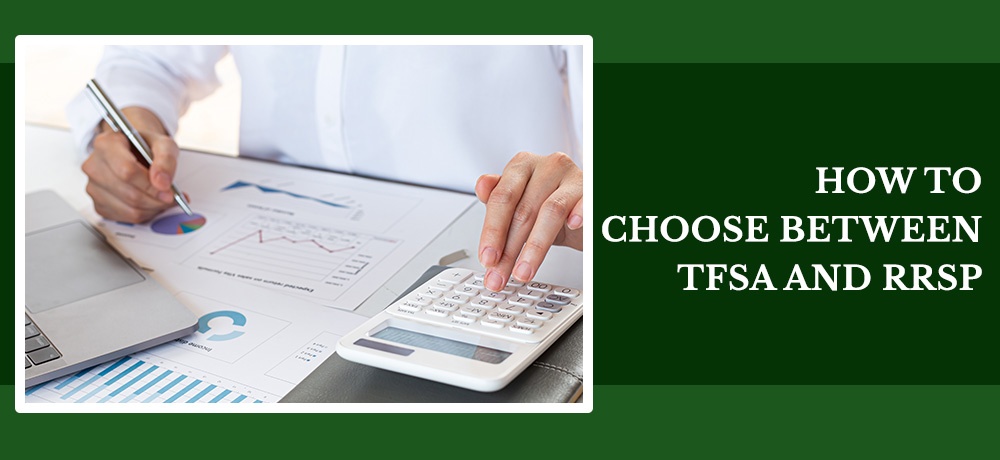How To Choose Between TFSA And RRSP

When it comes to saving money and getting a tax break, there are several options to choose from, and TFSA and RRSP investments are at the forefront! If you have a sufficient flow of income, investing in both options can multiply your saving and tax benefits. However, if you find it challenging to invest in them together, you’ll need to choose between the two.
To help you make the right choice among a TFSA and RRSP so you can meet your needs in the long run, chartered professional accountant, Sabeeh Naseer, has compared the pros and cons of both savings plans. Keep reading to see how each option differs, and which is recommended for your needs.
1. TFSA or Tax-Free Savings Account
A TFSA is an un-taxed account that allows you to grow your income and make withdrawals without incurring taxes (as it’s made up of after-tax contributions). This account offers ample flexibility as you can withdraw money at any time for any purpose. Thereby making it a great investment option if you have a lower income.
The downside to this investment account is that there are no barriers to withdrawals, which means you can exhaust your savings quickly if you aren’t careful. Other disadvantages of this account are that you will not receive income-tax reductions on it, and you will have no protection from creditors.
2. RRSP or Registered Retirement Savings Plan
RRSP is a tax-deferred account. Any contributions made here are tax-deductible. By investing in this account, you can grow your savings tax-free, and then convert it to get regular payments when you retire. If you decide to open a spousal RRSP, you can significantly reduce your combined tax burden. Another benefit of this investment vehicle is that you can borrow from your RRSP to buy your first home or pay for your education.
The disadvantage of using an RRSP is that all of your withdrawals from this account will be considered as ordinary taxable income. Similarly, withdrawals from this account will impact your income tax benefits. Also, the maximum contribution to this account is limited, which means you may need to put some of the personal goals on hold for longer.
Bottom line
As you can see, both the TFSA and RRSP investment plan have their pros and cons. As a result, you need to choose between them based on your financial circumstances and personal goals. For example, if you receive a low income, investing in a TFSA makes more sense. On the other hand, if you want to save for a second home, an RRSP is a good investment.
Other factors you need to consider to decide between these options is if you are a first time home buyer and if you have high disposable incomes.
For information on different investment plans to grow your wealth, reach out to chartered professional accountant, Sabeeh Naseer. I am an experienced accounting professional with vast knowledge and skills in several areas of financial planning, management, tax preparation, and wealth maximization. I focus on your needs and ensure that my plans drive you to your goals of financial growth and flexibility. My accounting firm serves clients across Lower Mainland and Fraser Valley, including New Westminster, Surrey, Vancouver, Burnaby, Langley, Delta, Richmond, and Coquitlam.
To learn more about my services, please click here or get in touch with me by clicking here.